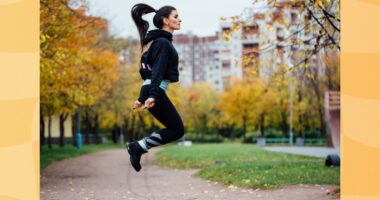
The first naloxone vending machine in Austin became operational this week, thanks to organizers from the NICE Project, allowing people in the region to access the lifesaving medication for free. Austin isn’t the first city to offer its residents 24/7 access to naloxone (first manufactured under the brand name Narcan). These vending machines have been installed at community health centers across the country in recent years, including in Battle Creek, Michigan; Las Vegas; and South Bend, Indiana. New York City is also reportedly planning to install 10 of the machines in various neighborhoods.
Naloxone vending machines are crucial public health tools that can help combat the effects of the opioid crisis, in part because the medication can be very difficult to access, Sheila Vakharia, PhD, deputy director of the department of research and academic engagement at the Drug Policy Alliance, tells SELF. “Currently, it is a prescription medication, and that’s where the challenge is,” Dr. Vakharia says. Below, what you need to know about naloxone vending machines, including who they help and how they can save lives.
How does naloxone work?
Naloxone is a medication that can rapidly reverse an opioid overdose; opioids are a highly addictive class of drugs that include prescription painkillers like OxyContin, the synthetic drug fentanyl, and the illegal drug heroin.
“The overdose crisis has been going on for two decades and seems to be intensifying,” Dr. Vakharia says. In fact, opioid overdose deaths have spiked at least 400% since the turn of the century. In 2020, 91,799 people died of a drug overdose death in the US, and nearly 75% of those deaths involved opioids, per the Centers for Disease Control and Prevention (CDC).
READ RELATED: Samantha Ruth Prabhu Fitness: 6 Quick Tips You Need To Learn From The Pan-India Star
Naloxone works by essentially halting a potentially fatal side effect linked to opioid overuse, Dr. Vakharia says. When a person takes an opioid, the drug will sit on specific opioid receptors in the brain, inhibiting your brain from telling your lungs to breathe, she explains. This is when naloxone can be lifesaving: If administered at the right time, naloxone can travel to those receptors and block them from becoming activated. “When you put naloxone in your system, it’s so strong it knocks off the opioid, takes its place, and the brain tells the lungs to start breathing again,” Dr. Vakharia explains.
Given the devastating impact of the opioid crisis, some experts say naloxone should be more widely available. “It should not be a prescription medication,” Dr. Vakharia says, explaining it isn’t dangerous to keep in your house. “Accidental exposure has not been shown to have any sort of adverse effects.” Naloxone isn’t a controlled substance and is safe to keep on hand, she stresses.
Why is it difficult to access naloxone?
As with any other prescription drug, getting naloxone usually requires seeing a doctor—and this can be easier said than done for people living with an addiction, Dr. Vakharia says. A number of factors may persuade someone not to visit a provider to get a prescription for naloxone. For example, “There are some states where people have actually been denied life insurance policies because [providers] see naloxone and see you as an overdose risk,” Dr. Vakharia says. Additionally, some people may be self-conscious about seeing a provider and getting a naloxone prescription given the stigma associated with it, she says.
Source: SELF








